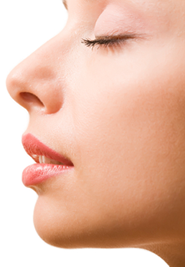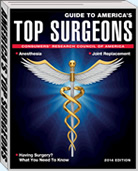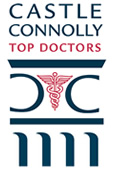Rhinoplasty (Nose Surgery)
 Nose surgery, or rhinoplasty, can yield a greater variety of improvements than any other aesthetic procedure. This variety is based on the expectations and goals of the patients seeking the surgery. Patients may request reduction of a prominent hump on the top of the nose. They may wish their noses to be made smaller or larger. They may also wish refinement of their tips. In addition some deformities resulting from previous trauma can also be improved during the surgery. In addition many patients will find that their breathing may improve following rhinoplasty surgery. Many ethnic patients will request refinement of their nasal appearance while still maintaining their ethnic identity.
Nose surgery, or rhinoplasty, can yield a greater variety of improvements than any other aesthetic procedure. This variety is based on the expectations and goals of the patients seeking the surgery. Patients may request reduction of a prominent hump on the top of the nose. They may wish their noses to be made smaller or larger. They may also wish refinement of their tips. In addition some deformities resulting from previous trauma can also be improved during the surgery. In addition many patients will find that their breathing may improve following rhinoplasty surgery. Many ethnic patients will request refinement of their nasal appearance while still maintaining their ethnic identity.
Rhinoplasties are most commonly performed on an outpatient basis. Depending on the complexity of the surgery indicated by the needs of the patient, a procedure may last anywhere from 1 1/2 to 3 1/2 hours. A surgical splint is usually worn on the nose following the surgery for up to one week. In addition a patient may have light nasal packing for a brief period of up to two days. Although most of the swelling will decrease in two months, some swelling, especially at the nasal tip, can take as long as six months or even longer to completely subside. Bruising around the nose, eyes, and cheeks that sometimes accompanies this surgery will usually resolve in two weeks; however, it can be camouflaged with makeup if one desires to be in public at an earlier time. In preparing for a rhinoplasty the surgeon will spend at least a couple of visits with the patient determining their exact needs and expectations. In addition the patient may be requested to bring photographs from magazines of noses that they both like and do not like. This will help prepare an accurate surgical plan to achieve the patient's desired result.
What can rhinoplasty do for me?
Rhinoplasty is an excellent procedure for achieving the following:
- Balance the size of the nose with the other facial features
- Modify the width of the nose at the bridge
- Improve the nasal profile, including removing humps or depressions
- Contour a nasal tip that is too large, "boxy," drooping or upturned
- Change the angle between the nose and the mouth
- Narrow and reshape the nostrils
- Correct asymmetry or deviation
Am I a good candidate for rhinoplasty?
The best candidates for rhinoplasty:
- Are at least 13 years old;
- Have finished facial growth;
- Are generally healthy;
- Do not smoke;
- Are seeking rhinoplasty for personal reasons, not pressure from others; and
- Have realistic goals for the procedure.
How is the procedure performed?
Rhinoplasty is usually an outpatient procedure performed under IV sedation or general anesthesia.
Surgeons use one of two techniques when performing nose surgery. In a closed rhinoplasty, incisions are made within the nostrils. In an open rhinoplasty, the incision is made across the columella, the tissue between the nostrils. With both methods, the surgeon gently lifts the soft tissues covering the nose. He or she sculpts the bone and cartilage to the desired shape. Any additional cartilage needed to augment the nose can often be taken from the septum.
If the patient has a deviated septum, the surgeon will adjust the septum and the inner structures of the nose to improve breathing. Then the tissues are re-draped and stitched closed. If the patient desires nostril reshaping, this is done as the final stage of rhinoplasty.
The entire procedure generally lasts one to two hours.
What is the recovery from nose surgery like?
For a short time after surgery, patients may experience puffiness, nose ache or a dull headache, some swelling and bruising, bleeding or stuffiness. Most patients feel like themselves within two days and return to work in about a week.
The results of rhinoplasty become gradually apparent as the days pass after surgery and swelling recedes. Swelling may reappear from time to time in the first year after the procedure. It is typically more noticeable in the morning and fades during the day.
Contact lenses can be worn immediately, but glasses may need to be taped to your forehead or propped on your cheeks for up to seven weeks.
Will I like the results of my nose surgery?
Patients with realistic goals for rhinoplasty are generally very happy with the new shape of their nose. The exact results depend on the patient’s nasal bone and cartilage structure, facial shape, skin thickness and age.
What are the possible risks of rhinoplasty?
Complications are rare and, when they occur, minor. These may include infection, nosebleed, or a reaction to the anesthesia.
Does insurance cover rhinoplasty?
Insurance may cover rhinoplasty if it is done for reconstructive or medical reasons, but likely not for cosmetic purposes.
What is revision rhinoplasty?
Revision or secondary rhinoplasty corrects deformities caused by a previous operation on the nose. It is a more difficult procedure to perform than primary rhinoplasty because there is less cartilage to work with and there may be scarring or tissue contracture (tightening). However, skilled plastic surgeons can improve both the appearance and the function of the nose.
To view our photo gallery of before and after examples, please click here.








If you would like more information about Rhinoplasty or to schedule an appointment, feel free to fill out our convenient contact form or call us directly at 301.982.0202.